A magical cocktail of people and place, the Har Ki Dun trek will not only bring you up and close with the legendary Garhwal landscape but also with the famed charm and warmth of the pahaaris, the mountainfolk. What might on the surface seem a life of languor, you will soon enough realise to be a fight for survival; fought with courage and ardour, an infectious smile and candour. Walk into a strange village and you might be greeted by umpteen pleas for ‘toffee’ but those outstretched palms clasp firmly at your attempts at friendship as well. The kids themselves will offer to take you around the village or show you the temple or tell you how the sharp-edged metallic collar on Shera the sheep dog has saved its life not once, but twice, from tiger attacks.
The trail, originally popularised by Jack Gibson, a teacher in the Doon School during the 40s, passes through the Govind Wildlife Sanctuary and National Park. It is not difficult to see why Gibson fell in love with ‘Har Ki Dun’ which means ‘valley of gods.’ From the starting point of the trek Taluka till the little Himalayan village, Osla, you will be tracing the gushing Supin River which along with the Rupin forms the two feeders for the Tons River, an important tributary of the Yamuna. En route is Gangar village, tucked away at a distance, almost as if shying from prying eyes. From Osla village the trek to Har Ki Dun valley will take you through fabulous golden meadows, past waterfalls cascading down like lacy curtains, tea shops set cosily into crags and over gullies. A very large variety of flowering plants – of bright electric to warm hues – carpet large stretches making for lovely frames. You reach the Har Ki Dun valley that beams with beauty, cradled by the towering Swargarohini, Haata and Har Ki Dun mountains. Exhausted after a long day’s trek, the moment you set foot in this paradise, you are suddenly infused with a renewed vigour and instead of crashing in your tent you clamber up the mesa for better views of the mountains.
Day 1: Dehradun – Sankri (2000 metres, 200 km, 8 hours)
During peak pilgrim and tourist season the drive to Sankri from Dehradun could be affected by traffic which makes driving via Mussoorie not a viable proposition. However, the drive through Nainbag and Naugaon is quite scenic and follows some of the most robust rivers and water bodies in the country – the Yamuna, the Kamal Ganga, Tons and the feeder Supin. Once we reach Purulo, there is a definite respite to the traffic and the trees become a brilliant verdant as we begin following the Kamal Ganga. From Naitwar, the confluence of Supin and Rupin to form the Tons, all the way to Sankri the road traces the banks of the Supin with its lush pine forests. Sankri is a sleepy little township with all the shops and hotels flanking the only road. The weather is suddenly cooler – Sankri is at an altitude of nearly 2000 metres – and you will be privy to unhindered views of the wildlife sanctuary and the snow-covered peaks in the horizon.
Some nearby trekking destinations from Sankri include the Juda Lake (3 km) and Kedarkantha (9 km).
Day 2: Sankri – Taluka – Osla (Drive 12 km, 45 min; Trek from Taluka to Osla 13 km, 8 hours)
The 12 kilometres from Sankri to Taluka takes the better part of an hour. The drive, despite the slow progress, is an adrenaline rush. This is an unforgettable and adventurous one over ledges, with sheer drops, bouncing over corries, swishing over streams. Taluka, despite its size, is a bustling village where life revs up with the arrival of the occasional vehicle from Sankri – ferrying food items for the many hotels, people or trekkers. Strap up and begin the trek from here where you go down the village towards the Supin flowing next door till you reach a path parallel to it and trace it for close to eight kilometres. You will get to meet plenty of locals along this stretch as there are many villagers who commute regularly between Osla and Taluka. Before you cross the Supin and begin a few kilometres of vigorous climb to Osla, you pass by a little village called Gangar which is actually quite a distance away from the track, tucked away into a mountainside. However there are still some houses that have strayed on to your path, a few selling hot tea. A good resting option too going by the number of children who would have swarmed you by now wanting to be photographed.
A winding path that curves around a boulder resembling a hastily-laid cot announces the arrival of Osla round the corner. Expect a few snotty-cute issues to ambush you with ‘toffee’ demands. You will be trailed like the Pied Piper through the village, past the ornate temple dedicated to Lord Shiva, embellished with colourful flags and wooden animals and birds on the roof. The sanctum sanctorum is ill-lit and you are advised not to enter it until you are bathed; so save it for later in the evening or early next morning before you head out to Har Ki Dun or on your way back.
Day 3: Osla – Har Ki Dun (3566 metres, 8 km, six hours)
An early start is suggested especially on this part of the trek as you will have to cover about four kilometres through open fields and meadows before you hit cover of any sort. The strange, windowless shelters of mud and wood rafters you will see along the way are storage houses where a family or a group of them together will have stashed away grain and other produce for the lean season. These are secured with large locks and the family members will take turns to visit them at least once a day however far they are from their residence. Right outside the Osla village you pass by a smaller temple of much recent origin where the rituals are interesting and include animal sacrifices.
The trek will take you through some amazing vistas – jungles and meadows, fields and extensive carpets of wild flowers, as well as what you been waiting for – views of the Swargarohini surreal in its snow cape and glistening black base. Though the track in many places have been overrun by streams or disappeared under landslides, you will still be able to proceed without much detour – the popularity of the destination ensures new routes are discovered and etched out in no time. The enterprising lot from nearby villages, counting on the trekker season, has put up shanties beneath talus or next to waterfalls from where they sell Maggi noodles and tea. There is one midway from where the old proprietor announces gracefully ‘you have only covered half the distance and this is your last chance for a chai.’
Another three more hours and you enter Promised Land. More than the delight at having reached, the joy is in the immense beauty that engulfs you. You are now right next to the stream which is waging a frothy battle with the banks – the glacier sources being nearby there is a newfound vitality to the flow. It is freezing cold too. The campsite is pretty bucolic and rustic nestling under a wooded canopy. From a butte nearby you can have sweeping views of the Har Ki Dun valley as well as its regal sentries – the Swargarohini, Haata and the Har Ki Dun peaks.
Day 4: Har Ki Dun – Jaundhar Glacier (4300 metres) / Around Har Ki Dun
Depending on the weather and other conditions the guides will inform you about the possibilities of heading to the Jaundhar Glacier. The trek to the glacier is a long one and the path can be tricky at times – snowed in or at times just disappeared under sudden summer showers. For shorter treks, head to the Haata Valley which is just a couple of hours away. There is plenty of action that awaits you here – be it sliding over snow or some basic bouldering and rappelling.
Day 5: Har Ki Dun – Osla
You will reach Osla faster on your return trek from Har Ki Dun giving you more time to explore the village. The area around the temple doubles as the main village square; join the kids in their game of cricket. You can make things more interesting by sponsoring a candy for the man of the match. Though mobile signals are non-existent, most youngsters flaunt their mobile handsets by playing music out loud; in case you want to make a call there is one STD phone booth manned by a little chap who can figure your balance faster than a calculator.
Day 6: Osla – Taluka – Sankri
Since hiking from Taluka to Osla is everyday for many of the villagers, you might even meet some of the folks you met on your way up. One great way to get engaging conversations going is to share your packed lunches with them; you’d be surprised at their extensive knowledge of the mountains and the terrains. You can also get some very interesting glimpses into their daily lives. Not to mention photo ops as well. The trek can be covered in a leisurely four to five hours.
Day 7: Sankri – Dehradun
Wake up early and explore the township – which you can in under two hours. There is a small but enchanting school of local design, made of wood and mud, a little below the cirque. Walk around the area earmarked for cultural performances, the palisaded vegetable gardens and return the hearty greetings from the lads on the wallaby getting ready to head to Dehradun.



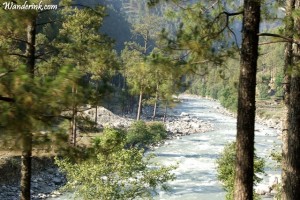
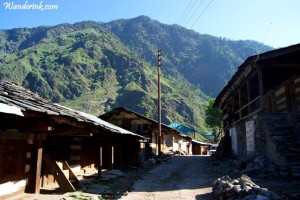
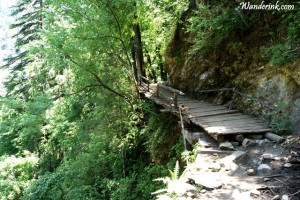
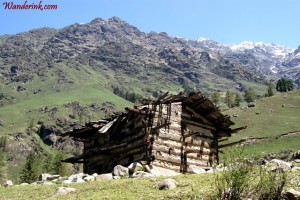
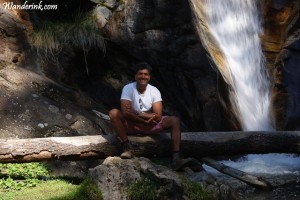
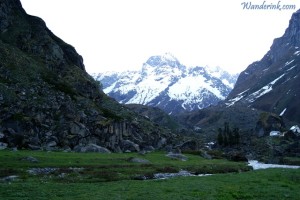
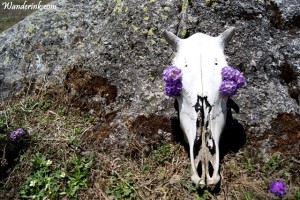









Hope to be able to escape family responsibilities and do this trek soon.
Go for it.. go for it.. really worth it.
Superb. You are the true ambassador of humanity…
You make it sound so inviting! It can’t possibly be this simple for everyone, yes?
Well, a little bit of prep wouldn’t harm… was thinking about a post on the same…the prep bit.
I feel a bit like searching for “Har Ki Dun”, because it did not specify the geographic details. but when I clicked on a few links, I went as far as the Himalayas. you should add these details, and save our time.
Hey, thanks for pointing that bit out, Siju. My funda was finding a place wouldn’t be difficult, what with Google Maps, GPS, et al. But what we lack these days is saying like it is…with no hyperbole…just enough to get the Bug going.